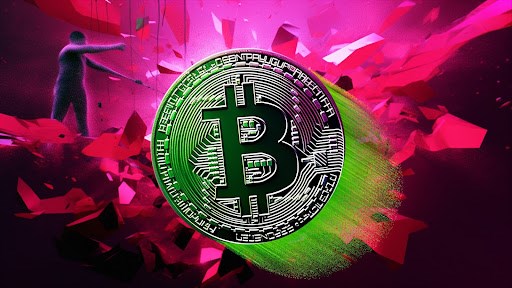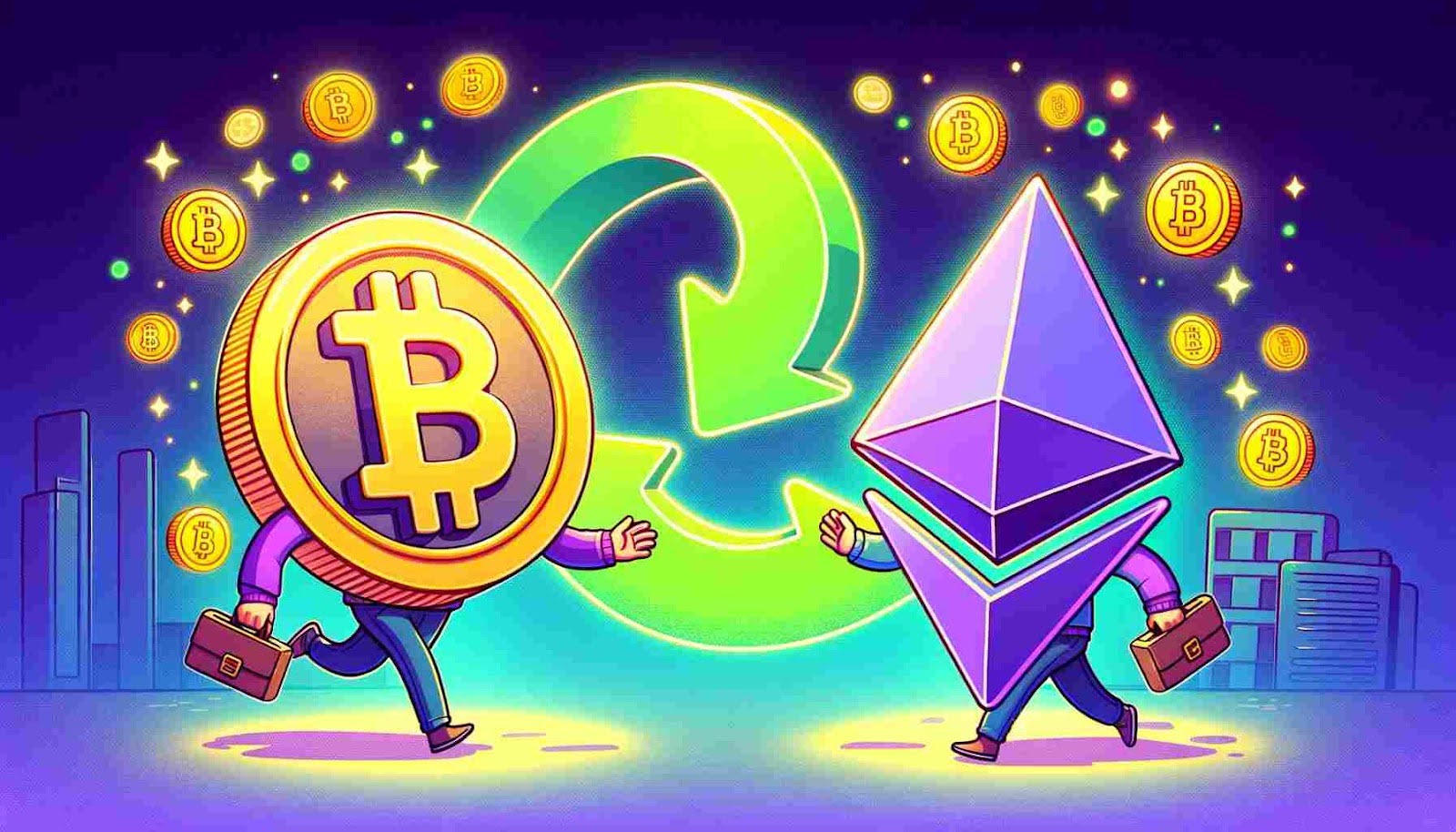
A Bitcoin (BTC) pastime once saw institutional investors try to take control over the world’s first cryptocurrency Bitcoin through the help of crypto companies, developers, and Bitcoin miners.
In conjunction with this, Bitcoin’s infamous creator Satoshi Nakamoto once said the following:
“If two developers can fork Bitcoin and succeed in redefining what Bitcoin is, then I will have no choice but to declare Bitcoin a failed project”.
As you’ll later find out, these efforts eventually failed - however as today’s crypto narratives suggest, there’s now a new wave of disruptors to deal with. These come in the form of asset managers such as BlackRock, big-name banks like JP Morgan, and financial regulators such as the Financial Action Task Force (FATF).
In this article we’ll take you through the lore behind Bitcoin’s defence against TradFi influences, which will then give us insight into how the formidable network may fare in its more recent institutional tussles.
The Early-Early Bitcoin Days
In the early days of 2009-2011, Bitcoin existed on just one piece of software: the Bitcoin Client.
Such ecosystem was comprised of two full node crypto wallets, with the complete omission of any mobile apps, merchants, exchanges, and institutional investors (etc…).
In other words, Bitcoin first existed as a primitive and bare software application, with its only functionalities being mining, sending, and receiving BTC.
What this further suggests is that the network didn’t possess that much potential to begin with (or so it seemed), with its future value only being envisioned by those engaging in thorough (and perhaps abstract) forethought and planning.
In short, the subsequent philosophies born from this seemingly blank-slated software generally fell into two camps: those who believed that Bitcoin should be a new payments system, and those who believed that Bitcoin should be a new monetary system.
As intuition would suggest, the former here would require a whole wealth of upgrades to the network’s speed and stability metrics… as ultimately, its end-game ambition would be to replace the US dollar.
In contrast, the latter - which would see Bitcoin become a new base-layer for high value settlements like gold - would require a lot less effort in order to be achieved.
Bitcoin Cash Vs. Bitcoin Gold
When it comes to who fell on what side of the debate, institutional investors largely opted for the payments route, whilst actual Bitcoin holders saw the network as a revolutionary monetary tool (with payments still being a second-priority option).
Such dynamic created a battle between ‘big blockers’ and ‘small blockers,’ as those after a faster network for payment purposes wanted to achieve this feat by increasing the size of each Bitcoin block (from their original limit of 1MB that is). On the flip side, this type of move would’ve been detrimental to Bitcoin’s prowess as a monetary tool, as not only would it increase the likelihood of its 21 billion total supply being altered, but it would also make the network less decentralised over time, as well as entice the possibility of a hard fork.
Hard fork definition:
“A hard fork is a permanent divergence in the blockchain, commonly occurring when non-upgraded nodes cannot validate blocks created by upgraded nodes that follow newer consensus rules. Put simply, a hard fork is a change to the software protocol that makes previously invalid blocks/transactions valid, or vice-versa”- Originstamp.
In short, such disagreements could also be seen as a battle between short versus long-term Bitcoin philosophies - which interestingly, Satoshi was believed to be open to both options.
A Potential Bitcoin Hard Fork- Which Chain Would Reign Supreme?
In 2014, uber-influential Bitcoin developers Gavin Andresen and Mike Hearn put forward the essential ‘big blocker’ manifesto; Bitcoin XT.
Bitcoin XT was programmed to transform Bitcoin’s block size from 1MB to 8MB, and then double it each year until 2036. This would conclude with Bitcoin blocks being a whopping 8GB large - therefore meaning only a handful of nodes would be able to support them (i.e. a less decentralised outcome).
Further, when it came to the proposed hard fork outcome involved here, big blockers argued that not only would ‘most nodes’ support the new sizes, but also that the majority of the Bitcoin community would be backing the move (and therefore remain on the original blockchain).
At the time, many of today’s mammoth DeFi entities such as Circle and Bitpay supported Bitcoin XT’s direction, as well as many Bitcoin miners.
On the other side of the Bitcoin war, small blockers were cooking-up their own ideas for the network’s future. This consortium included many other reputable names from the space, such as George Maxwell, Samson Mow, and Adam Back (who was credited in the Bitcoin Whitepaper).
Miners also played an interesting role here, as they were the people whom big blockers thought ‘owned’ the blockchain due to the belief that post-fork power went to whichever chain possessed the most mining power. On the contrary, small blockers believed that ‘nodes’ control the blockchain, therefore meaning that - to them - the fork with the most ‘node support’ would be the ‘real’ Bitcoin blockchain.
With the relatively uninspiring addition of Bitcoin Unlimited into the mix in 2016 (which followed Bitcoin XT and Bitcoin Classic as another Bitcoin fork), it became evident that a ‘full’ network upgrade wasn’t the way for taking the blockchain forward.
The Arrival of SegWit
Come 2017, the Bitcoin Segregated Witness (SegWit) update was introduced.
SegWit offered a proposition wherein Bitcoin’s block size would increase from 1MB to 2MB without causing a hard fork - therefore meaning that it served as a nice middle ground between big and small blockers. Additionally, SegWit provided opportunities for Layer-2 solutions to be built on Bitcoin.
However in a narrative that we see all-too-often across society, such compromise didn’t seem to fit the bill for institutional investors (i.e. big blockers), which led to many calling the Bitcoin war ‘a battle over power’ as opposed to a disagreement over how it should be scaled.
Further, it later appeared that SegWit included an exploit patch that made BTC mining 20% cheaper, meaning miners soon rushed to the side of big blockers in a ploy to reap these financial gains (with this being the primary motive for their new ushering of ‘big blocker’ support).
However sentiment for SegWit later fell amid news of Chinese Bitcoin mining company Bitmain gaining a monopoly over the industry due to specific patents it had filed. Simultaneously, the hard fork aftermath of the infamous Ethereum DAO hack in 2016 didn’t help proceedings (i.e. the event that ultimately caused Ethereum’s ‘Ethereum Classic’ hard fork).
2017… When Big-Time Crypto Exchanges Became ‘Small-Blockers’
A landmark moment in Bitcoin’s trajectory came when exchanges such as Kraken, Bitstamp, Bitfinex, and more all agreed to the solution of the Bitcoin SegWit ‘soft fork’ with the most node support being the OG chain (regardless of mining power).
For this to be sufficiently agreed upon across the crypto ecosystem, something had to give…
Where in short, the turning point came when the Litecoin ecosystem (a de-facto Bitcoin testnet that hosts many of the network’s updates) forced its anti-SegWit miners to implement the upgrade.
More poignantly, bullishness for SegWit was bolstered through a grassroots initiative called ‘User Activated Soft Fork’ (UASF). Here, the idea behind UASF essentially revolved around Bitcoin nodes signalling that they would reject blocks from Bitcoin miners that had refused to implant SegWit.
For extra context, node signalling has been a perennial voting mechanism for upgrades on the Bitcoin blockchain, where as of today, both node and mining power votes dictate what actions are taken.
Conclusions regarding the implementation of SegWit became a lot clearer when the ‘New York’ agreement was drafted by big-name big-blockers such as Circle, BitGo, Bitmain, and Ledger (who together accounted for 80% of Bitcoin’s hash rate at the time).
Such document included an agreement which gave the go-ahead for SegWit UASF, however with the addition of a future hard fork for larger block size purposes.
Here, the following hard fork eventually failed due to its inability to keep-up with the block sizes achieved in another Bitcoin fork called Bitcoin Cash.
A Victory of the ‘User Activated Soft Fork’ (UASF)
After several demoralising failures, as well as their attention now turning to leading altcoin Ethereum, big-blockers had essentially been defeated by the small-blocker UASF movement.
In demonstrating the true ethos of Bitcoin and small-blocker DeFi philosophies, UASF and its pseudonymous founder Shaolin Fry represented a community-driven movement that was able to overpower round-table forces.
And in going back to the Bitcoin Cash vs Bitcoin Gold debate, this marked a victory for the latter. However, as originally proposed by small-blockers, Bitcoin Layer-2 solutions have also been able to support transactions of the ‘payments’ accord.
Institutional Bitcoin Attacks: Today & Moving Forwards
Present and future debates surrounding Bitcoin are already poised around censorship resistance and outright control, as opposed to issues of block sizes and scaling.
Such centrally-sourced concerns were initially thought to arise once central monetary systems truly got to grips with the powers of user-driven finance - where further, this now seems to be the case given the array of banking and asset manager Spot Bitcoin ETF applications.
Further, with the sheer capital brute of such TradFi institutions able to gain them control over the price action and supply of Bitcoin (as well as other cryptos), the ‘more trivial’ systematic cogs such as miners, nodes, and developers, become unimportant.
For example, Ethereum is now touted as the new global crypto payments network for institutions, which is why a lot of control-attention has now gone in this direction. In addition, such control mechanisms are now easier to implement given the blockchain’s switch to Proof of Stake (PoS) last year, however given the underlying peer-to-peer and global appeal of crypto, complete control will still be very hard to achieve…
This latter point could perhaps be an explanation for the plethora of intrusive and quite-frankly innovative regulatory pressures being applied on crypto nowadays.
Anyhow, as a final conclusion we could say that crypto has the same power-hungry institutional wolf on its hands, however it’s wearing different sheep’s clothing.
For a more in-depth delve into Bitcoin’s takeover woes, we recommend Jonathan Bier’s book ‘The Blocksize War: The battle over who controls Bitcoin’s protocol rules’.
Want More Cutting-Edge Crypto News?
Follow Us: X TikTok Instagram Telegram LinkedIn
Sign up to our newsletter at the bottom of the page
Check Out Our Top 10 Crypto Currencies of 2023
This article is intended for educational purposes and is not financial advice.


















